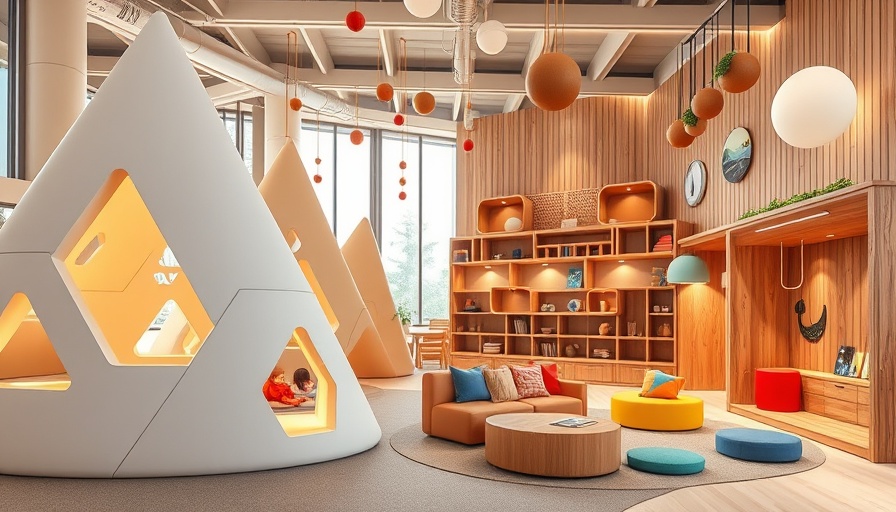
Exploring the Archipelago Playscape: A New Frontier in Children's Play
The Archipelago Playscape represents a transformative approach to play spaces, designed with the intention of encouraging creativity and engagement in young children. Developed by architects Jakub Szczęsny and Karolina Potębska, in collaboration with Rainer Stadlbauer, this innovative playscape is located in the Kinder Kunst Labor within Altoona Park in St. Pölten, Austria. It challenges the conventional norms that often prioritize safety over exploration, aiming instead to create an environment that fosters risk-taking and confidence among children.
The Balance Between Safety and Adventure
In a world where children are often shielded from challenges, the Archipelago Playscape invites them to engage with a variety of natural terrains and structures that promote physical and emotional development. Recognizing the importance of play, the designs prioritize upper limits to height and angle—not to hinder exploration but to encourage it responsibly. With a maximum height of just 47 inches and gentle slopes limiting angles to 15%, children are invited to navigate through a uniquely stimulating environment designed to enhance their motor skills and self-trust.
Meeting Developmental Needs through Play
The creators of the Archipelago Playscape have addressed an essential developmental challenge of our time: preparing children for the unpredictability of adult life. As noted by neuroscientific principles such as the Window of Tolerance, children benefit from experiencing both hypoarousal and hyperarousal in a controlled manner, enabling them to develop coping mechanisms as they interact with the world. This inclusive playscape provides myriad opportunities for unstructured play, fostering skills that will be crucial later in life.
Emotional Growth Through Risk Engagement
Boldly embracing calculated risks, the Archipelago Playscape cultivates emotional resilience. Engaging in challenging activities helps children learn how to assess risks and make informed decisions. By providing varied experiences through climbing, sliding, and hanging in a “forest of ropes,” the structure encourages children to explore their boundaries safely, which ultimately contributes to healthy emotional development.
The Role of Playscapes in Modern Education
The concept of playscapes like Archipelago is gaining traction in educational discourses around the world as advocates argue for more expressive, experiential learning environments. By integrating playful learning into curricula, educators can help children navigate their emotions, enhance their cognitive skills, and develop social connections. Ultimately, the playscape offers educational benefits that extend beyond physical engagement.
Future Trends in Children’s Play Areas
As modern parenting evolves, so too do the designs of play spaces built for children. The Archipelago Playscape is symbolic of a shift towards more interactive, provocative environments. This shift could lead to a proliferation of similar playscapes, as communities and designers rethink the potential of play in childhood development. As cities evolve, the integration of these structures could redefine how children engage with their surroundings, offering immersive learning experiences that are as educational as they are fun.
Why Parents Should Embrace Playscape Adventures
Engaging in environments like the Archipelago Playscape is vital for developing well-rounded children. By allowing kids to exercise their creativity, assess risks, and socialize, parents can contribute to their child's holistic growth. Initiating conversations about adventurous play will encourage children to cherish their creativity and courage while reaping the benefits of learning through play.
As more communities understand the value of such inclusive and engaging recreational spaces, the Archipelago Playscape stands as a testament to the power of innovative design in enriching childhood experiences. This playscape not only serves as a playground but as a critical instrument in a child’s social, emotional, and cognitive development.
To learn more about how such features can benefit your community or to share your thoughts on children’s playspaces, consider reaching out to local designers and educators. Together, we can advocate for designs that embrace adventure and learning in unique, valuable ways.
 Add Row
Add Row  Add
Add 




Write A Comment